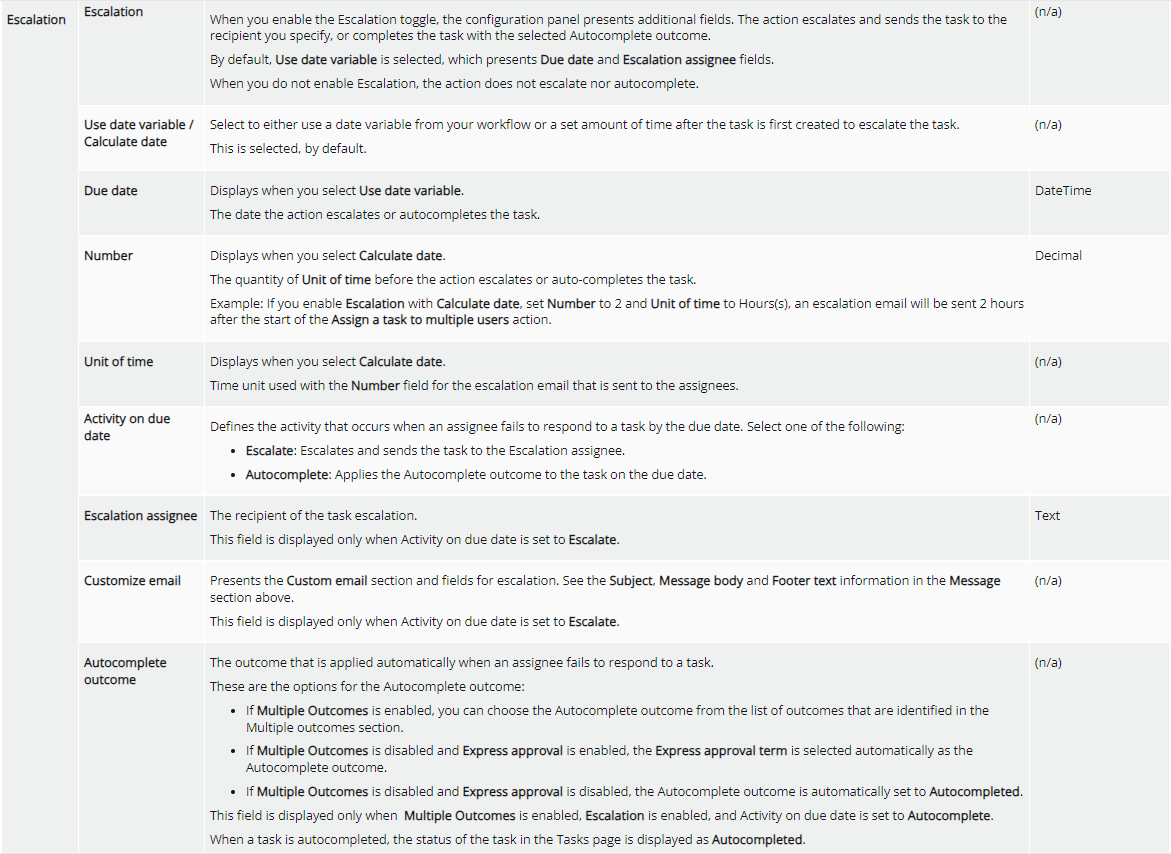Apologies if this is covered somewhere else, but I was not able to find it.
In NAC Tasks, I am trying to understand the difference between “Reminders After”, “Subsequent Reminders” and Escalation after (Calculate Date).
(For purposes of this question, let’s say all reminders are in “Days”, and it will be based on the current date.)
Is dSubsequent Reminders] the number of days after the initial reminder? Or is rSubsequent Reminders] the number of days that the reminder will be sent out for?
So, if I want the first reminder to go out in 3 days, and I want 4 subsequent reminders (every day), and I want it to be escalated “after’ the 5th reminder
For example:
- oCurrent Date] - January 1, 2024
- Send out Reminders on 1/ 4, 1/5, 1/6, 1/7
- Escalate on 1/8
For the above example, would this be my configuration:
- Reminders After - 3
- Subsequent Reminders - 4
- Escalated After (calculate date) - 5 - (rCurrent Date + 5 Days])
Thanks!



